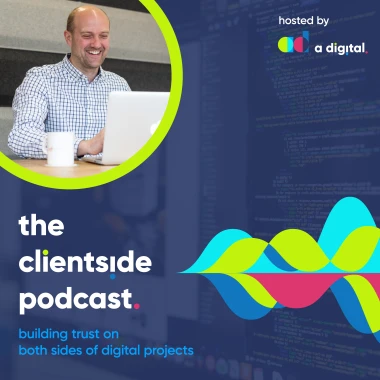
Product Innovation with Bryce Davies
The Clientside Podcast
44 min Bryce Davies
In this episode of the Clientside podcast Andrew speaks with Bryce Davies from workforce.com about innovation and what it really means.
Bryce highlights the importance of not innovating for the sake of innovation and that during uncertain times re-engaging with customers and understanding their problems can be a great driving force for innovation. Bryce believes that building a relationship with customers is the key to innovation.
Bryce suggests rather than allocating time to innovate, allocate time to talk to your customers as innovation doesn't have to be coming up with the next big idea.
Listen on your smart device or read the transcript below
I think staying ahead of it, not for the sake of innovating, but for the sake of moving your business to a point where you want it to be in 10, 20, 30 years and having that long time horizon.
Bryce Davies Tweet

